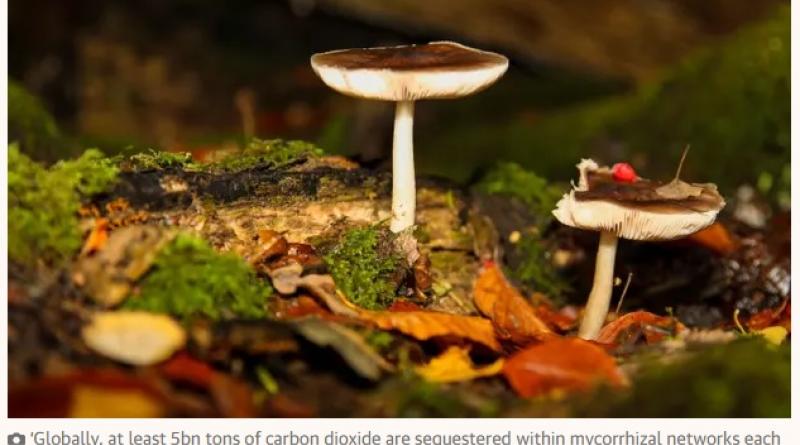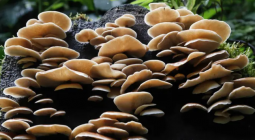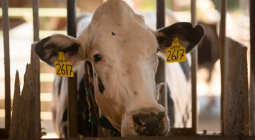If we want to tackle the climate crisis, we need to address a global blindspot: the vast underground fungal networks that sequester carbon and sustain much of life on Earth.
Fungi are largely invisible ecosystem engineers. Most live as branching, fusing networks of tubular cells known as mycelium. Globally, the total length of fungal mycelium in the top 10cm of soil is more than 450 quadrillion km: about half the width of our galaxy. These symbiotic networks comprise an ancient life-support system that easily qualifies as one of the wonders of the living world.
Through fungal activity, carbon floods into the soil, where it supports intricate food webs – about 25% of all of the planet’s species live underground. Much of it remains in the soil, making underground ecosystems the stable store of 75% of all terrestrial carbon. But climate change strategies, conservation agendas and restoration efforts overlook fungi and focus overwhelmingly on aboveground ecosystems. This is a problem: the destruction of underground fungal networks accelerates both climate change and biodiversity loss and interrupts vital global nutrient cycles. These networks should be regarded as a global public good to be mapped, protected and restored as a matter of urgency.
Fungi lie at the base of the food webs that support much of life on Earth. About 500m years ago, fungi facilitated the movement of aquatic plants on to land, fungal mycelium serving as plant root systems for tens of millions of years until plants could evolve their own. This association transformed the planet and its atmosphere – the evolution of plant-fungal partnerships coincided with a 90% reduction in the level of atmospheric carbon dioxide. Today, most plants depend on mycorrhizal fungi – from the Greek words for fungus (mykes) and root (rhiza) – which weave themselves through roots, provide plants with crucial nutrients, defend them from disease and link them in shared networks sometimes referred to as the “wood wide web”. These fungi are a more fundamental part of planthood than leaves, wood, fruit, flowers or even roots.
We are destroying the planet’s fungal networks at an alarming rate. Based on current trends, more than 90% of the Earth’s soil will be degraded by 2050. Modern industries, from agriculture to forestry, have failed to take account of the life in the soil. Despite the fact that mycorrhizal fungi supply as much as 80% of a plant’s nutrients, intensive farming practices – through a combination of ploughing and application of chemical fertilisers, pesticides and fungicides – severely reduce the abundance, diversity and physical integrity of fungal networks. Logging wreaks havoc below ground, decreasing the abundance of mycorrhizal fungi by as much as 95%, and the diversity of fungal communities by as much as 75%. A large study published in 2018 suggested that the “alarming deterioration” of the health of trees across Europe was caused by a disruption of their mycorrhizal relationships, brought about by nitrogen pollution from fossil fuel combustion and agricultural fertiliser.
Mycorrhizal fungal networks make up between a third and a half of the living mass of soils and are a major global carbon sink. When we destroy them, we sabotage our efforts to limit global heating. Plants supply carbon to their fungal partners in exchange for nutrients like nitrogen and phosphorus – much of the phosphorus that makes up the DNA in your own body will have passed through a mycorrhizal fungus. In their exchange, plants and fungi engage in sophisticated trading strategies, striking compromises and resolving dizzyingly complex trade-offs. The influence of these quadrillions of microscopic trading decisions spills out over whole continents.
Globally, at least 5bn tons of carbon dioxide are sequestered within mycorrhizal networks each year, a quantity roughly equivalent to the amount of carbon dioxide emitted annually by the US (unpublished data suggests this figure is closer to 17bn tons). Even small reductions in the prevalence of fungal networks have significant consequences: a release of just 0.1% of the carbon now stored in Europe’s soils is equal to the annual emissions from 100m cars.
Mycorrhizal fungi are keystone organisms that support planetary biodiversity; when we disrupt them, we jeopardise the health and resilience of the organisms on which we depend. Fungal networks form a sticky living seam that holds soil together; remove the fungi, and the ground washes away. Mycorrhizal networks increase the volume of water that the soil can absorb, reducing the quantity of nutrients leached out of the soil by rainfall by as much as 50%. They make plants less susceptible to drought and more resistant to salinity and heavy metals. They even boost the ability of plants to fight off attacks from pests by stimulating the production of defensive chemicals. The current focus on aboveground biodiversity neglects more than half of the most biodiverse underground ecosystems, because areas with the highest biodiversity aboveground are not always those with the highest soil biodiversity.
Mycorrhizal fungal networks and the nutrient flows and processes they manage should be considered a global public good, analogous to clean air and water. For millennia in many parts of the world, traditional farming and land management practices have attended to the health of the soil and thus supported plants’ fungal relationships implicitly. But over the course of the 20th century, our behaviour has led us into trouble.
Organisations like the Society for the Protection of Underground Networks (Spun), the Fungi Foundation and GlobalFungi are advocating for soil ecosystems, and leading a massive global sampling effort to create open-source maps of Earth’s fungal networks. These maps will help chart the properties of underground ecosystems, such as carbon sequestration hotspots, and document new fungal species able to withstand drought and high temperatures. Researchers will be able to track the distribution of fungal networks as they shift in response to changing climates and patterns of land use, much as they already do for global vegetation, climates and ocean currents.
A deeper knowledge of these dynamic living systems will support conservation projects and policies that aim to halt their destruction and encourage their recovery, besides driving much-needed innovation in underground ecosystem science and technology.
Mycorrhizal fungal networks have long sustained and enriched life on our planet. It’s time they receive the attention they deserve.
-
Toby Kiers is professor of evolutionary biology at Vrije Universiteit Amsterdam and co-founder of the Society for the Protection of Underground Networks (Spun)
-
Merlin Sheldrake is a biologist and the author of Entangled Life: How Fungi Make Our Worlds, Change Our Minds, and Shape Our Futures






